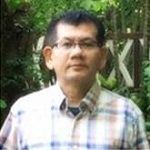Table of Contents
The complex of investigations of optical characteristics of controlled objects and spectral symmetric-wave and two-colour compensating thermometry (SWT and TCCT) influence on their errors of method and instrumental errors is performed. Advantages of these new methods in the field of errors of method, in comparison with known spectral and also classical energy and spectral ratio thermometry are proved. It is established that right use of the SWT and the TCCT, which takes into account thermometrical conditions, allows to completely exclude methodical and instrumental components from the errors of optical temperature measurements.
Spectral thermometry is based on remote quantitative determination of the spectral emissivity distributions of controlled objects. Using these distributions and well-known relationships between the spectral coefficients of emission, absorption, reflection and transmission we can determine macro-optical characteristics of these objects and remotely investigate them.



 Open Access
Open Access
